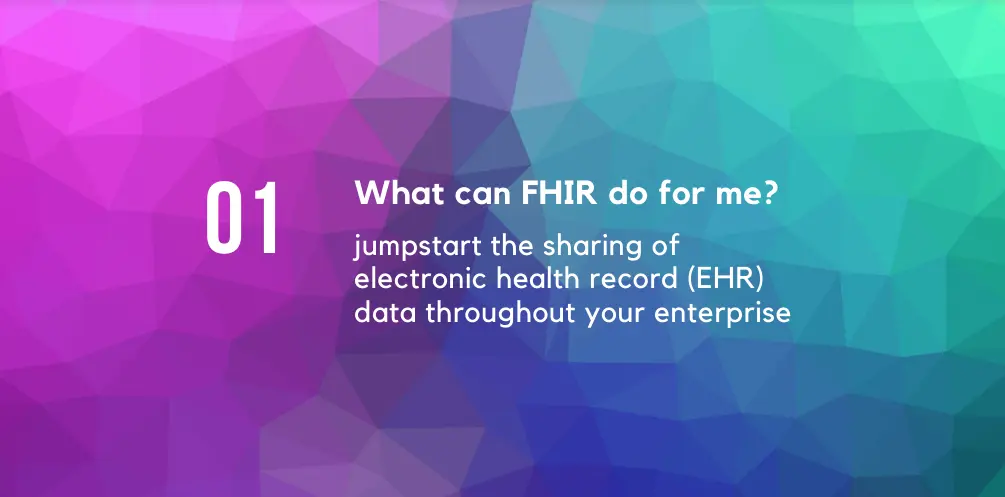How Does FHIR Support Quality Measurement in Healthcare?
Measuring healthcare outcomes

Doctors’ clipboards still hang outside their patients’ doors. But the handwritten notes don’t tell the complete story. Today’s health records are electronic, and quality measurement is following suit. It takes the right tools to measure healthcare outcomes, which in turn makes improvements possible. More and more, we are seeing FHIR take its place as one of these tools.
In medicine, we measure and track many things, including:
- quality of healthcare services
- patient and family engagement
- patient safety
- resource use
- clinical effectiveness
We all want to make healthcare safe, more efficient, more patient-centered. We all want treatments that are more equitable, timely and effective. Ensuring more effective, patient-focused service is also important to outcomes. A healthcare provider working towards specific goals can use quality measurements to develop a strategy to meet and exceed those goals.
Let’s look at how quality measurement can accomplish this, and how Fast Healthcare Interoperability Resources (FHIR) make it possible.
What is Quality Measurement?
Doctors, hospitals and healthcare systems can use data to measure and improve everything from outpatient facilities to imaging facilities. Healthcare professionals need to specify quality measurement data points in their ongoing quest to make improvements. Measuring these data points allows them to reallocate resources and make improvements with objective, fact-based recommendations.
Who Determines Quality Measures?
Quality measures may be established internally or developed by government agencies and third-party standards organizations. Whether they are internal and/or industry-determined, quality measures are all about making sure patients get the right health care at the right time.
Standardizing measurement systems is a major goal. Public and private payers measure the performance of providers on a variety of quality metrics, and many of them have developed their own quality measurement approach. Efforts to base quality measures on billing data or individual electronic health records (EHRs) have been less than ideal.
Big Data Enables Big Improvements

As the U.S. healthcare system shifts away from traditional fee-for-service toward payment focused on the value of care, quality measures are becoming more important than ever. For example, harmonizing various healthcare delivery systems allows multiple players to increase the size of a sample population. This larger data set makes it possible to report on outcomes based on data aggregated across dozens or hundreds of facilities and EHRs using standards for interoperability in healthcare.
Facets of Data Quality
When evaluating data, you must define what is most important for your organization. There are several core dimensions of data quality for quality measures:
- Completeness: Are you fetching all the data you need from clinical and claims sources?
- Recency: Is data pulled frequently enough to be considered “fresh”?
- Standardization: Are you getting consistent codes for diagnoses, procedures, labs, vitals, medications, social history and location of service?
Additional data quality characteristics include uniqueness, validity and accuracy. They can be prioritized differently by different health organizations according to their needs.
A Wide Range of Quality Measures Systems
There aren’t universal sets of measures used across all providers, markets or payers. The most widely adopted measures are:
The Healthcare Effectiveness Data and Information Set (HEDIS) has over 90 measures and dozens of sub-measures.
- Medicare’s Shared Savings Program (MSSP) has over 30 measures.
- Consumer Assessment of Healthcare Providers and Systems (CAHPS)
- CMS Hospital Inpatient and Hospital Outpatient Quality Reporting (IQR and OQR)
- CMS Medicare Part C and D Star Rating Program (STAR)
- CMS Merit-Based Incentive Payment System (MIPS)
The Promise of FHIR
The interoperability standardization made possible by FHIR is transforming all healthcare sectors into value-based, patient-centric systems. This is happening because data sources are more accessible, more actionable and more valuable.
For the big pharma companies and healthcare systems, manual quality reviews aren’t scalable. On the other end of the spectrum, smaller medical practices, can’t afford the additional cost associated with manual quality measurement processes.
Thanks to artificial intelligence (AI) and machine learning, we can quickly and accurately allow healthcare providers to locate and share relevant patient data in medical records.
“AI is like burning gasoline in a very inefficient engine,” explained Dr. Don Rucker with the Office of the National Coordinator (ONC), which is responsible for encouraging health IT adoption and fostering interoperability. “You need a lot of data to come up with even a little bit of a conclusion. APIs are going to be critical for allowing developers to access enough data to train and test meaningful models.”
How Quick FHIR Can Help

APIs are crucial for data exchange and data analytics in healthcare environments. When coupled with Fast Healthcare Interoperability Resources, better known as FHIR, they open up unprecedented access to personal health information.
Without open APIs, machine learning can’t happen. And according to Greg Hodgkinson, Chief Technology Officer at Prolifics, the Prolifics Quick FHIR solution helps healthcare organizations take advantage of the APIs required for health data to be shared.
“Quality measures is one of the use cases covered by Smart on FHIR,” Hodgkinson says. Outcomes, patient perceptions of care, efficiency of organizational structure and more—these are among the data points that must be measured to make ongoing improvements possible.
This means leveraging the FHIR set of more than 140 APIs correctly within your existing systems. A wide range of health data is covered by FHIR, including clinical data, patient data, claims data and quality management. These data are key to measuring quality improvements.
No one needs to implement the entire standard, end-to-end.
“FHIR is meant to be one of those standards where you can pick out the aspects you want to implement,” Hodgkinson said. “Health Level Seven has provided the APIs and resources and wrapped them into implementation guides, which specify how you use these resources (normally a subset of the resources) to support a specific set of use cases,” Hodgkinson explains.
Prolifics can help healthcare organizations identify which APIs they’ll need to implement quality measurement. Prolifics can help them build the exchange systems they need in accordance with all relevant implementation guides.
How can Quick FHIR help? Let’s look at one example. A payer needs to measure provider outcomes to ensure funding. Faster access to better-quality data makes those measurements possible.
“The payers have schemes set up where they need to provide a level of financial support for a level of service for end patients. In order for those schemes to be funded, there’s report backs that measure the quality of those schemes and how they’re actually working for customers,” Hodgkinson said.
“So the APIs are about sharing data. Once we have a FHIR set of resources loaded we can share that data or pull it from a system that doesn’t speak FHIR, put it behind a FHIR API and allow consumers of that data to pull that out from those APIs.”
Conclusion
The FHIR standard offers a secure, RESTful, standards-based way to access patient information. Healthcare providers find that responding to quality reporting requests can be greatly simplified by combining FHIR with shareable knowledge artifacts.
Quality measurement uses all these layers of FHIR:
- the foundational and implementation layers define interactions and profiles
- the administrative and process layers represent the data of interest the clinical reasoning layer supports evaluation and reporting.
In the end, better access to better-quality data means physicians can improve their clinical practice. Patients can make more informed healthcare decisions. Payers and health systems can save money and reduce overhead.

